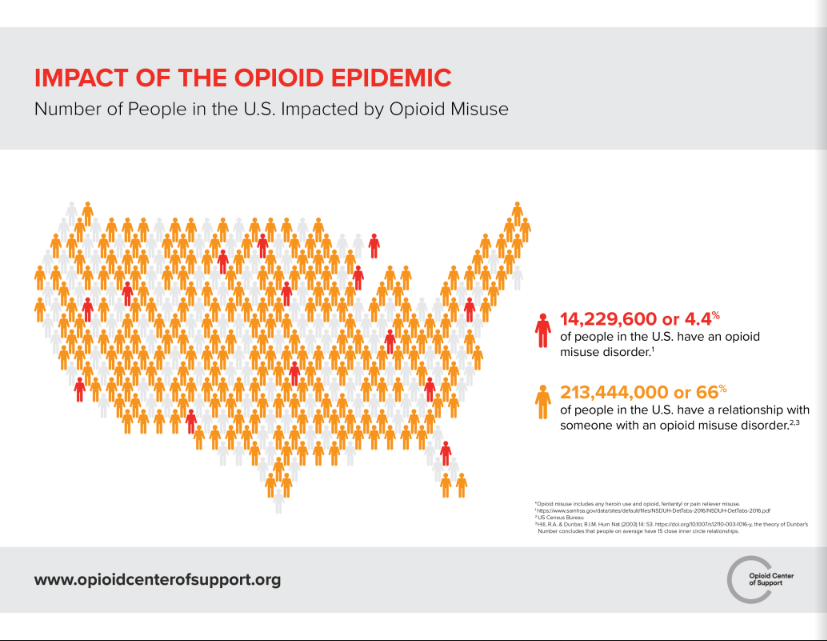
Dr. Mark Gold’s Research You Can Use
Description- Law enforcement and drug courts play a fundamental role in the battle against opioid addiction and overdoses. The last article of the series discusses in detail the effectiveness of court-mandated treatment, the importance of initiating timely treatment for the offenders while they are still in prison, the dire need for law enforcement to expand their roles toward recovery of addicts and drug courts to offer treatment that is holistic and evidence-based.
The debilitating effect of the current opioid epidemic has been discussed in much detail regarding its long-reaching effects on health, society and public policy. It is, however, also essential to recognize the pressures imposed upon the law enforcement of the nation.
Social service agencies, educators and healthcare professionals are left overwhelmed and under-supported as a result, as they push forward to prevent not only the use of these drugs but also treat the affected.
As this crisis has eventually built up into an epidemic, the role of law enforcement and drugs courts still remains ambiguous. Many advocacy groups view law enforcement as the enemy and not part of the solution.
Nevertheless, the significance of the role law enforcement plays in prevention, treatment, and recovery needs to be recognized as they are a vital element to prevention. This can only be done when the involvement of law enforcement and drug courts is redefined with a focus on treatment and recovery, instead of simply incarceration.
Importance of in-prison treatment
An estimated one-half of State and Federal prisoners abuse or are addicted to drugs. Yet, few receive treatment during their incarceration. The initiation of drug abuse treatment in prison and its continuation upon release holds significant value for not just the individual’s recovery, but also extends support in consolidating public health and safety.
 Various studies have demonstrated the efficacy of combining prison- and community-based treatment for addicted offenders.
Various studies have demonstrated the efficacy of combining prison- and community-based treatment for addicted offenders.
Results showed significant reductions in the risk of both recidivism to drug-related criminal behavior and relapse to drug use. This proved to yield net significant savings in costs to the society.
A 2009 study in Baltimore, Maryland, found that opioid-addicted prisoners who started methadone treatment and counseling in prison and continued it post-release, had better outcomes in terms of diminished drug use and criminal activity, in comparison to the incarcerated who only received counseling while in prison or those who only started methadone treatment after their release.
Such data reaffirms the importance of medication-assisted treatments as a valuable component of a treatment program in combination with other crucial elements such as therapy and counseling.
Interventions yield better results
Physician Health Programs have long relied on coerced or forced treatment to get physician addicts into treatment. Such measures have successfully allowed these programs to succeed in keeping physician addicts in treatment.
It is not surprising that outcomes for physician addicts have turned out to be so promising, even fentanyl or OUD addicts have been able to get back to work and in recovery. Research has further demonstrated that individuals who enter treatment owing to legal pressures have reportedly more favorable outcomes than those who enter treatment of their own will.
Addiction is now recognized as a chronic brain disease and not merely a moral weakness anymore. Understanding that addiction exerts profound repercussions on the functionality of the brain paves the way for understanding why addicts make poor choices repeatedly.
The science of addiction has revealed that an addicted person’s impaired ability to stop abusing drugs is related to deficits in the function of the prefrontal cortex- part of the brain involved in executive function, self-monitoring, and prioritization.
Hence, the drugs of abuse compromise the individual’s risk-benefit analyses and the ability to think ahead. This is where interventions become necessary when the addicted patient cannot be trusted to make the right choices for themselves.

Research shows that 95 percent of people suffering from substance use disorders do not think that they have a problem or need treatment. Few addicts enter treatment without substantial coercion, which most often comes from families or the criminal justice system. While it makes sense that not everyone addicted to drugs should be committed to treatment, the opposite is also true.
Two prominent examples of effective coercion are HOPE Probation, focused upon convicted felons on probation, and the state-based Physician Health Programs which deals with addicted physicians. Both of these programs are typically characterized by extensive monitoring and complete abstinence of any substances of abuse.
Participants do have the autonomy not to follow the program requirements, but in both cases, they face serious consequences: probationers in HOPE risk going back to prison and physicians in PHPs will lose their medical license. Statistics have proven that both the programs elicited excellent results for the majority of the participants.
Even though it is highly preferred that patients voluntarily seek the help they need instead of being forced into it, the rate of drop-outs from voluntary commitment just in a matter of several weeks has risen to be a common drawback. Such drop-outs almost always translate into relapse.
There exists a significant body of evidence which proves that compelled treatments are just as effective, if not more, than voluntary treatment. The biggest reason for this is the prolonged retention rate.
This means that the more time spent in treatment, the greater the potential to manage cravings, withdrawals and negative thoughts. A healthy network is gradually built upon which the addicts in recovery can improve relationships, build a healthy support system, re-learn the art of joy and build realistic future plans.
Re-strategizing the role of law enforcement
The law enforcement plays an essential role in curtailing the influx of drugs in the society by limiting access to illicit heroin, synthetic opioids like fentanyl and other new drugs on the market, or at least manipulate prices to control supply and demand.
 Yet, given the current epidemic proportions of opioid addiction in the nation, the law enforcement agencies have to widen their targets beyond interdiction and arrest and redefine their role in this battle.
Yet, given the current epidemic proportions of opioid addiction in the nation, the law enforcement agencies have to widen their targets beyond interdiction and arrest and redefine their role in this battle.
Their support of drug education programs, treatment services and legal alternatives to incarceration are crucial for this purpose.
Upon the time of a drug arrest, it is essential to assess the culprit for addiction and get them the needed help. Such active participation by the enforcement throughout the process of recovery will ensure greater compliance with recovery programs and the probability of relapse will be reduced.
Adolescent substance abuse remains to be a significant issue as college campuses continue to suffer through related events to student alcohol and drugs misuse. SAMHSA explored the unique role of law enforcement in a comprehensive approach to prevent substance abuse on college campuses.
Greater opportunities are presented through collaborations between local and campus police. Evidence-based strategies, such as motivational interviewing, can be utilized by law enforcement to help students cope with or avoid altogether dangerous behaviors and situations related to substance use.
Resourcing the drug courts
Drug courts are responsible for diverting individuals arrested for drug offenses to court-monitored drug treatment programs as an alternative to incarceration. This excludes drug dealer, drug offenders, and any other ‘violent’ offenders. Failure to complete drug treatment under the court order most likely results in imprisonment.
This allows individuals arrested on minor drug charger an opportunity to seek treatment and get a second chance at living a better life.
Arguments, however, surround the current paradigm of the role of MATs in court-ordered treatment programs, deeming it inaccurate and misperceived.
A study published in Health Affairs discovered that only 5 percent of people referred for opioid addiction treatment by the U.S. criminal justice system received the best treatment.
On the contrary, 40 percent of people referred for opioid addiction treatment by other sources, such as health care providers, employers or voluntarily, were treated with medication. Researcher argued that such low rates of referrals for MATs highlights a missed opportunity to provide people with an effective treatment that they desperately need.
Three main medications are commonly used in MAT: methadone, buprenorphine, and naltrexone in its injectable Vivitrol formulation used once a month. Most drug courts only allow the use of Vivitrol in MAT, owing mainly to prejudice and misperceptions, as it is the only one of the three medications that is not itself an opioid.
This means it helps prevent offenders from getting high on opioids even when they use again. However, Vivitrol cannot be initiated unless the patient was weaned off of opioids completely.
Methadone and buprenorphine, on the other hand, are primarily considered more effective as they can be started sooner and when taken as prescribed, prevent withdrawal and enable a patient to resume their responsibilities.
This discomforting hesitation to give addicted patients drugs to combat addiction, as substituting one drug for another, proves that many still consider addiction a moral failing and not a brain disease. Without eradicating this thought process, no real progress can be made in understanding and controlling the opioid epidemic.

Furthermore, the idea of judges prescribing medical treatment, without any medical training, is unsettling.
The lack of medical expertise and prejudiced views are hindering the process that could otherwise be made effective through drug courts.
The treatment being provided needs to be all-encompassing, holistic and evidence-based. Otherwise staying free of drugs while still remaining addicted, only makes the offenders more vulnerable to fatal overdoses upon release.
Looking forward
The most effective models of treatment will be those that prioritize the integration of criminal justice and drug treatment systems and services. Addicts are ambivalent about treatment, and it helps to have leverage provided by a Board of Medicine or license or the Courts. It is important to prioritize the integration of criminal justice and drug treatment systems and services.
Treatment and criminal justice personnel need to collaborate on treatment planning, strategizing the implementation of screening, placement, testing, monitoring, and supervision, keeping in view the systematic use of sanctions and rewards. Treatment for arrested drug abusers should include continuing care, monitoring and supervision after incarceration and during parole.
Please See
What Should We Do Now to Counter the OUD Epidemic? – Improving Existing Treatments – Article 2
References
- https://www.nytimes.com/roomfordebate/2015/11/11/should-drug-addicts-be-forced-into-treatment/drug-addiction-recovery-often-starts-with-coercion
- https://www.nytimes.com/roomfordebate/2015/11/11/should-drug-addicts-be-forced-into-treatment/compelled-drug-addiction-treatment-works-because-of-retention
- https://www.samhsa.gov/capt/tools-learning-resources/role-law-enforcement-preventing-substance-misuse-college-campuses
- https://thecrimereport.org/2018/04/12/how-drug-courts-can-respond-to-the-opioid-crisis/
- https://drugfree.org/learn/drug-and-alcohol-news/criminal-justice-system-play-key-role-better-treatment-opioid-addiction/
About the Author:
 Mark S. Gold, M.D. served as Professor, the Donald Dizney Eminent Scholar, Distinguished Professor and Chair of Psychiatry from 1990-2014. Dr. Gold was the first Faculty from the College of Medicine to be selected as a University-wide Distinguished Alumni Professor and served as the 17th University of Florida’s Distinguished Alumni Professor.
Mark S. Gold, M.D. served as Professor, the Donald Dizney Eminent Scholar, Distinguished Professor and Chair of Psychiatry from 1990-2014. Dr. Gold was the first Faculty from the College of Medicine to be selected as a University-wide Distinguished Alumni Professor and served as the 17th University of Florida’s Distinguished Alumni Professor.
Learn more about Mark S. Gold, MD
About the Transcript Editor:
 A journalist and social media savvy content writer with extensive research, print and on-air interview skills, Sana Ahmed has previously worked as staff writer for a renowned rehabilitation institute, a content writer for a marketing agency, an editor for a business magazine and been an on-air news broadcaster.
A journalist and social media savvy content writer with extensive research, print and on-air interview skills, Sana Ahmed has previously worked as staff writer for a renowned rehabilitation institute, a content writer for a marketing agency, an editor for a business magazine and been an on-air news broadcaster.
Sana graduated with a Bachelors in Economics and Management from London School of Economics and began a career of research and writing right after. Her recent work has largely been focused upon mental health and addiction recovery.
The opinions and views of our guest contributors are shared to provide a broad perspective of addictions. These are not necessarily the views of Addiction Hope, but an effort to offer a discussion of various issues by different concerned individuals.
We at Addiction Hope understand that addictions result from multiple physical, emotional, environmental and genetic factors. If you or a loved one are suffering from an addiction, please know that there is hope for you, and seek immediate professional help.
Published on October 29, 2018
Reviewed by Jacquelyn Ekern, MS, LPC on October 29, 2018
Published on AddictionHope.com
